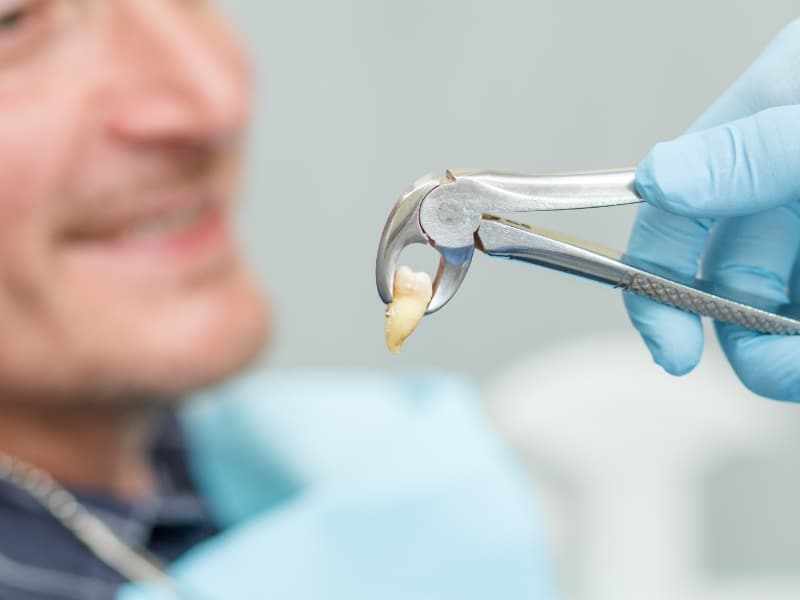Tooth pain or discomfort can make it difficult to get through your day, and while some issues may resolve on their own, others can develop into more urgent situations. When that happens, an emergency tooth extraction might be the best option to ease your pain, stop an infection, and safeguard your oral health. Recognizing the signs that call for immediate dental care can help you avoid further complications and restore your well-being. To help you feel more prepared, here are some common signs that may indicate you need an emergency tooth extraction.
Severe Tooth Pain That Doesn’t Subside
While occasional toothaches are not uncommon, persistent, sharp, or throbbing pain could indicate a serious underlying issue. If over-the-counter pain relievers and home remedies fail to provide relief, it may signal:
- Advanced tooth decay: When the inner pulp is infected or damaged.
- Cracked or fractured tooth: If the crack extends to the root, extraction might be the only solution.
If the pain becomes unbearable or interferes with sleep and daily activities, it’s time to seek emergency dental care.
Swelling of the Gums, Jaw, or Face
Swelling is a sign that something is wrong beneath the surface. When swelling occurs around a tooth, it may point to an infection, such as an abscess.
- Dental abscess: A pus-filled infection that can spread quickly to other parts of your body if untreated.
- Gum infection: If an infection around a tooth becomes severe, the tooth may need to be removed to prevent the spread of bacteria.
If the swelling spreads to your face or neck, or if it is accompanied by difficulty breathing or swallowing, you must contact an emergency dental provider immediately.
A Loose or Shifted Tooth
Adult teeth should remain firm. If you notice one or more teeth becoming loose or shifted without any apparent cause, it could be a sign of:

- Advanced gum disease: When periodontal disease damages the bone and tissues supporting your teeth, extraction may be necessary to prevent further damage.
- Trauma or injury: A blow to the mouth can loosen teeth. If the root or surrounding tissues are damaged beyond repair, the tooth may need to be removed to promote healing.
Ignoring these signs can lead to more complications, such as neighboring teeth becoming misaligned.
Infection That Won’t Respond to Antibiotics
While minor infections might respond to antibiotics, more severe cases require additional treatment. If the infection persists despite medication, or if the same area becomes repeatedly infected, an extraction may be the best course of action.
- Tooth decay reaching the root: Infections deep within the tooth may require removal to stop the spread.
- Compromised immune system: In some cases, individuals with weakened immune systems (due to health conditions or treatments) might need to have infected teeth removed to avoid systemic infections.
Waiting too long to address an infection could lead to abscess formation or, in rare cases, life-threatening sepsis.
Wisdom Tooth Complications
Wisdom teeth, or third molars, are often problematic because they don’t always erupt properly. If they become impacted (trapped under the gums) or grow at odd angles, it can lead to pain, swelling, and infections. Signs that a wisdom tooth may need emergency extraction include:
- Persistent pain at the back of your mouth.
- Swelling around the jaw or gum tissues.
- Difficulty opening your mouth fully or chewing.
In cases where a wisdom tooth causes an infection or becomes trapped, emergency extraction may be required to prevent further oral health problems.
Tooth Damage Beyond Repair
Injuries from accidents or trauma can sometimes result in teeth that are broken or fractured beyond what fillings, crowns, or other restorative treatments can repair. If the structure of the tooth is too damaged, an extraction may be the only option.
- Sports injuries or falls: Teeth may break or shatter, especially if not protected with a mouthguard.
- Car accidents or other trauma: Emergency extraction can help prevent complications after serious injuries.
If you experience tooth damage following an injury, it’s essential to see a dentist immediately to determine whether extraction is necessary.
Gum Disease and Bone Loss
Periodontal (gum) disease can progress from mild inflammation to severe infections that damage the tissues and bones supporting your teeth. In advanced stages, it may result in loose teeth or infections that require immediate removal.
- Severe bone loss: If the bone holding the tooth is eroded, it may no longer be possible to save the tooth.
- Chronic infection in the gums: When left untreated, chronic infections can affect other parts of the mouth and even spread to other areas of the body.
Extraction can help stabilize the mouth and prevent further damage to surrounding teeth and gums.
Overcrowding or Orthodontic Issues
In some cases, a tooth extraction might be required to create space for other teeth to align properly. Emergency extractions are typically necessary if:
- Teeth are erupting in abnormal positions, causing pain and discomfort.
- Overcrowded teeth are leading to infections or oral trauma.
Even though these situations are more common in planned dental care, a severely misaligned or painful tooth might need to be addressed immediately.
Persistent Bleeding or Trauma to the Gums
If you notice excessive or unexplained bleeding from the gums, especially around a particular tooth, it could indicate a serious problem such as advanced periodontal disease or an injury. In cases where bleeding is accompanied by severe pain, swelling, or infection, an emergency tooth extraction may be the most effective solution to prevent further complications.
Conclusion
Knowing the signs that indicate you might need an emergency tooth extraction can help you act quickly and avoid unnecessary suffering. Persistent pain, swelling, infections, loose teeth, wisdom tooth issues, and severe tooth damage are just a few reasons you should contact an emergency dental provider. Ignoring these symptoms can lead to further complications, so it’s essential to seek professional help when needed. Emergency extractions, though not ideal, are often the best option to prevent more serious problems. If you’re experiencing any of these signs, don’t wait—reach out to an emergency dentist to get the relief and care you need.


